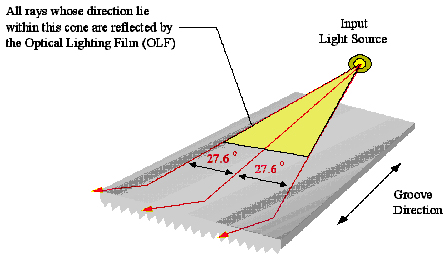|
Lightpipe
The lightpipe uses the principle of total internal
reflection to guide light inside the length of a hollow pipe
and allow some of the light to leave the pipe along the way.
This technology is usually used for building illumination but
in our case it makes a very nice ‘colour mixer’. Because the
light bounces around in the pipe we can use the lightpipe to
combine the output of the different LED and create a very
uniform colour mix.
Total Internal Reflection (TIR) occurs when light hits a
boundary between two media with different indices of
refraction at an angle past the critical angle. The critical
angle Theta is given by the Snell’s Law as
Theta =
arcsin(n1/n2)
Where n1 and n2 are the indices of refraction of the media
at the boundary. For our lightpipe the media inside the pipe
will be air (n2=1) and the other material will be
polycarbonate (n1=1.58).

|